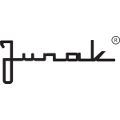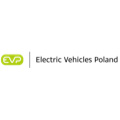01_18 New perspectives for Polish electromobility — the Sejm adopted the act on electromobility and alternative fuels
At the meeting on 28 December 2017, the Council of Ministers adopted the draft act on electromobility and alternative fuels and recommended its prompt submission for the purpose of further proceedings in the parliament. The act with be a key element in development of the alternative fuel market in Poland.
Following the first reading in the Sejm, which took place on 9 January, and introduction of a small number of amendments, the draft was submitted for further works to the Energy and State Treasury Committee and the Infrastructure Committee; afterwards, on 11 January, the act was adopted by the Sejm.
The pace of works was fast due to penalties that Poland would be subject to in case of further delays in implementation of Directive 2014/94/EU of the European Parliament and of the Council of 22 October 2014 on the deployment of alternative fuels infrastructure. The provisions should be implemented by 01 February 2018.
Concessions for owners of electric and hybrid cars in Poland are currently still very modest, unlike in many European countries. Most of them are local self-government initiatives, such as free, generally accessible charging stations or exemptions from fees in paid parking zones, introduced in several cities.
However, measures taken to popularise cars which use alternative fuels have proven insufficient so far — in 2015, the number of publicly available charging points in Poland was estimated at approx. 30. According to more recent data collected by the Alternative Fuels Observatory (Obserwatorium Rynku Paliw Alternatywnych, ORPA), generally available infrastructure of charging stations for electric vehicles in Poland remains limited. As at August 2017, there were approx. 150 points which met the adequate standard, of which only several dozen allowed for quick vehicle charging. By comparison, there are more 100 thousand charging stations in total all over Europe.
Government plans assume that approx. 400 quick charging stations and approx. 6 thousand standard-power public charging points will be created by 2020.
According to the Sustainable Development Strategy, one million electric vehicles are to be used on Polish roads by 2025, driving the development of innovative industry. It is estimated that by 2020, the development of electromobility is to cost approx. PLN 19 billion; further PLN 40 billion needed for network development will be provided by energy companies.
The act on electromobility and alternative fuels is the next stage of implementation of Directive 2014/94/EU of the European Parliament and of the Council of 22 October 2014 on the deployment of alternative fuels infrastructure. The directive pertains to all branches of transport (road, railway, air, inland and maritime navigation) and aims to decrease their dependency on oil and minimise their impact on the environment. The first stage of implementation has already been completed — it included adoption of the National Policy Frameworks for the development of alternative fuels infrastructure in March 2017.
The act assumes a number of incentives for buyers of electric vehicles, including exemption from excise duty or the possibility to increase the amount of amortisation charges for electric vehicles (increase of the current limit of the vehicle’s initial value from EUR 20,000 to 30,000). Moreover, amendments to the Law on Public Roads and the Traffic Law Act, stipulated in the act, introduce additional concessions for electric vehicle users, including free parking in paid parking zones and the possibility to use bus lanes (which is supposed to be in force only until the end of 2025 and may depend on the number of people travelling in the vehicle).
At the stage of the draft presented for the Sejm reading, it was proposed that municipalities should be able to establish so-called clean transport zones in city centres, where only electric, hydrogen-powered or natural gas-powered vehicles would be able to move free-of-charge, along with special vehicles and those belonging to local inhabitants. Other vehicles would be permitted to enter after paying a fee, which could not exceed PLN 30. The fees would constitute the municipality’s income. This provision was removed from the draft on 9 January 2018, resulting in no sanctions for entry of cars with combustion engines into these areas.
The version of the act adopted by the Sejm differs from the one presented in April 2017. The amendments were made in connection with social consultations. Some of the submitted proposals were included, e.g. the process of development of supporting infrastructure was simplified and the definition of charging was expanded, which will allow for the charging service to cover other vehicles, such as bicycles and motorbikes.
The act assumes development of charging infrastructure on market terms with construction of the infrastructure being subsidised using public funds.
However, postulates to support other fuels, including hydrogen fuels, were not included since the most extensive support is envisaged for electric cars, in line with the policy within this scope adopted by the government, which indicated in two strategic documents that development of electric transport is the most desirable direction. On the other hand, hybrid vehicles, which were limited to hybrid vehicles charged using an external power source in the act, will be driven out by electric cars according to the draft author, so their support, including in the form of exemption from excise duty, is only stipulated for a limited time period (until the end of 2020).
In the context of electromobility, other public measures within this scope should also be mentioned. In October 2016, four Polish power companies — PGE Polska Grupa Energetyczna SA, Energa SA, Enea SA and Tauron Polska Energia SA — established ElectroMobility Poland SA. Its purpose is creating broadly defined conditions for development of the electromobility system in Poland, including development of one or more prototype electric cars, followed by proposing a business model for their development and commercialisation, for which the Ministry of Energy wants to allocate one billion PLN from the state budget. Ultimately, it is supposed to lead to creation of an electric vehicle adapted to the purchasing power of the Polish consumer.
The legislator has also stipulated the obligation to replace some of the vehicles owned by central authorities and local self-government units with electric vehicles (excluding hybrids), setting the share of electric vehicles in the fleet of used vehicles to 10% starting from 1 January 2020 and subsequently increasing it to 20% from 1 January 2023.
Norway may serve as a model for development of electromobility. According to ORPA reports, electric, hydrogen-powered and hybrid cars constituted more than a half of all registered cars in that country. The contributing factor was undoubtedly the fact that prices of electric and “traditional” vehicles in Norway are comparable; moreover, developed infrastructure and a number of concessions make it easier to decide to purchase an electric car.
At the time of submission of this article, the act has been adopted by the Sejm and is subject to proceedings in the Senate.

























































